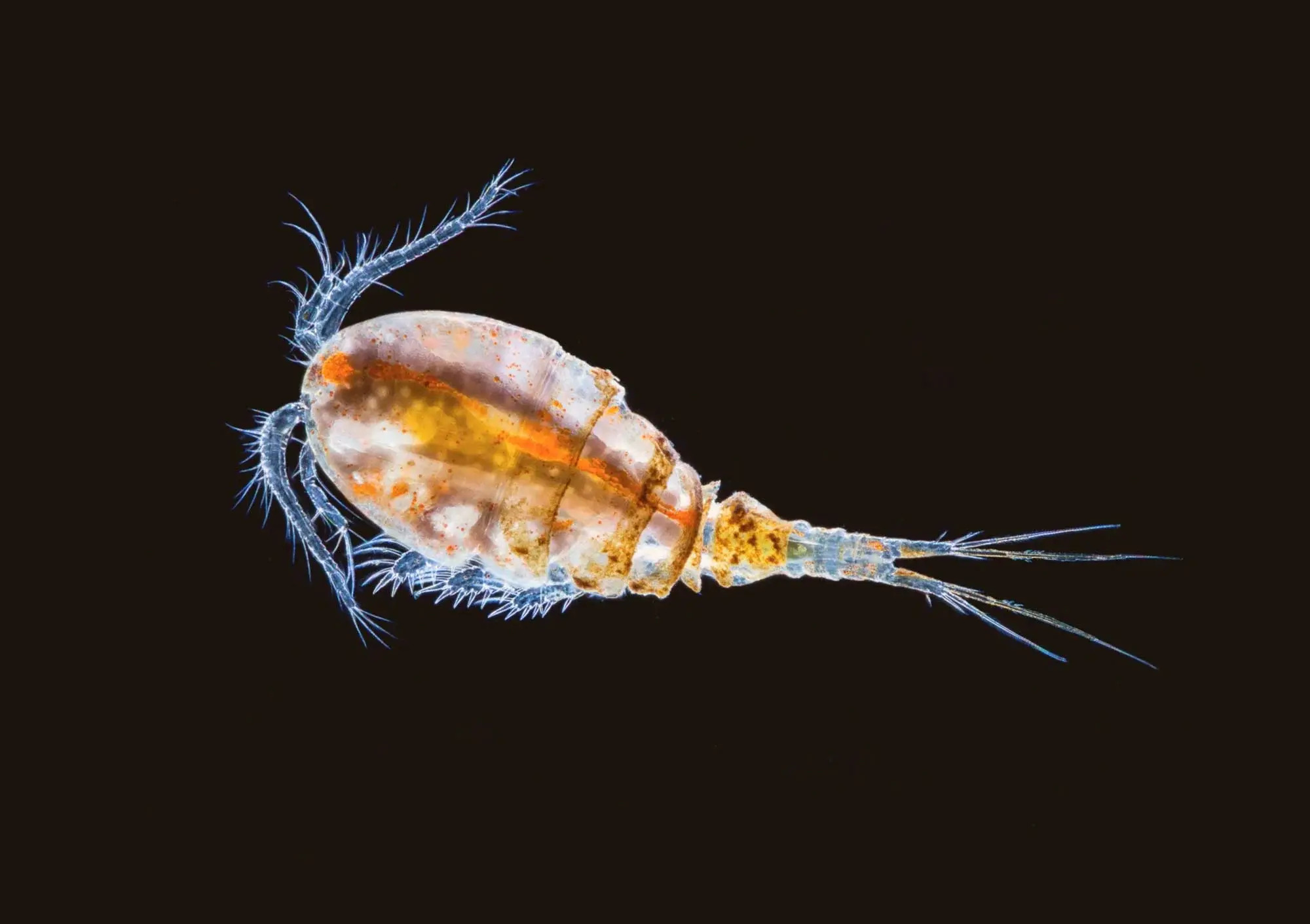
What are copepods? These tiny crustaceans, often overlooked, play a crucial role in aquatic ecosystems. Found in nearly every water body, from oceans to freshwater lakes, copepods are a vital part of the food web. They serve as a primary food source for many fish and marine mammals. Why are copepods important? They help control algae populations and recycle nutrients, maintaining the balance of aquatic environments. Did you know that copepods are among the most numerous multi-cellular organisms on Earth? With over 13,000 species, their diversity is astounding. Let's dive into 31 fascinating facts about these incredible creatures and uncover their hidden world.
What Are Copepods?
Copepods are tiny crustaceans found in nearly every aquatic environment. These small creatures play a significant role in the marine food web. Let's dive into some fascinating facts about copepods.
- Copepods belong to the subclass Copepoda, which includes over 13,000 species.
- They are typically less than 2 millimeters long, making them nearly invisible to the naked eye.
- Copepods are found in both freshwater and saltwater environments.
- They are a crucial part of the zooplankton community, serving as a primary food source for many marine animals.
- Some species of copepods are parasitic, living on fish or other marine organisms.
Copepod Anatomy
Despite their tiny size, copepods have complex bodies adapted to their environments. Here are some interesting details about their anatomy.
- Copepods have a segmented body with a head, thorax, and abdomen.
- They possess a single, simple eye located in the center of their head.
- Their antennae are used for swimming and sensing their surroundings.
- Copepods have specialized mouthparts for feeding on algae, bacteria, and detritus.
- Some species have bioluminescent properties, allowing them to glow in the dark.
Copepod Reproduction
Reproduction in copepods is a fascinating process involving several stages. Let's explore how these tiny creatures multiply.
- Copepods reproduce sexually, with males and females mating to produce eggs.
- Females carry their eggs in sacs attached to their bodies until they hatch.
- The eggs hatch into nauplii, which are the larval stage of copepods.
- Nauplii undergo several molts before reaching adulthood.
- Some copepod species can produce hundreds of eggs in a single reproductive cycle.
Copepods in the Food Web
Copepods play a vital role in the marine food web, serving as a link between primary producers and higher trophic levels. Here are some key points about their ecological importance.
- Copepods feed on phytoplankton, bacteria, and detritus, converting these into biomass.
- They are a primary food source for many fish, including commercially important species like herring and mackerel.
- Marine mammals, such as whales, also consume large quantities of copepods.
- Copepods help regulate the population of phytoplankton, preventing algal blooms.
- They contribute to the ocean's carbon cycle by transporting carbon to deeper waters through their fecal pellets.
Copepod Adaptations
Copepods have evolved various adaptations to survive in diverse environments. Here are some of their remarkable survival strategies.
- Some copepods can enter a state of diapause, a form of dormancy, to survive unfavorable conditions.
- They have developed rapid escape responses to avoid predators.
- Copepods can adjust their buoyancy to remain at optimal depths for feeding and reproduction.
- Some species produce toxins to deter predators.
- Copepods have a high reproductive rate, allowing them to quickly rebound from population declines.
Human Impact on Copepods
Human activities have both direct and indirect effects on copepod populations. Here are some ways humans influence these tiny creatures.
- Pollution, such as oil spills and plastic waste, can harm copepod populations.
- Climate change affects copepod distribution and abundance by altering water temperatures and currents.
- Overfishing of copepod predators can lead to imbalances in the marine food web.
- Coastal development and habitat destruction can reduce the availability of suitable environments for copepods.
- Conservation efforts, such as marine protected areas, help preserve copepod habitats and populations.
Fun Facts About Copepods
Copepods are full of surprises. Here are some fun and lesser-known facts about these tiny crustaceans.
- Copepods have been found in extreme environments, such as deep-sea hydrothermal vents and Arctic ice.
The Tiny Wonders of the Ocean
Copepods might be small, but they play a huge role in our oceans. These tiny crustaceans are a key part of the marine food web, feeding on algae and becoming food for larger creatures. They help keep our oceans healthy by recycling nutrients and even contribute to the carbon cycle. Despite their size, copepods are incredibly diverse, with thousands of species adapted to different environments. From the deep sea to freshwater lakes, they thrive almost everywhere. Their ability to survive in extreme conditions is nothing short of amazing. Next time you think about ocean life, remember these tiny but mighty creatures. They might be small, but their impact is enormous. Understanding copepods helps us appreciate the complexity and beauty of marine ecosystems. So, let’s give a nod to these unsung heroes of the sea.
Was this page helpful?
Our commitment to delivering trustworthy and engaging content is at the heart of what we do. Each fact on our site is contributed by real users like you, bringing a wealth of diverse insights and information. To ensure the highest standards of accuracy and reliability, our dedicated editors meticulously review each submission. This process guarantees that the facts we share are not only fascinating but also credible. Trust in our commitment to quality and authenticity as you explore and learn with us.
